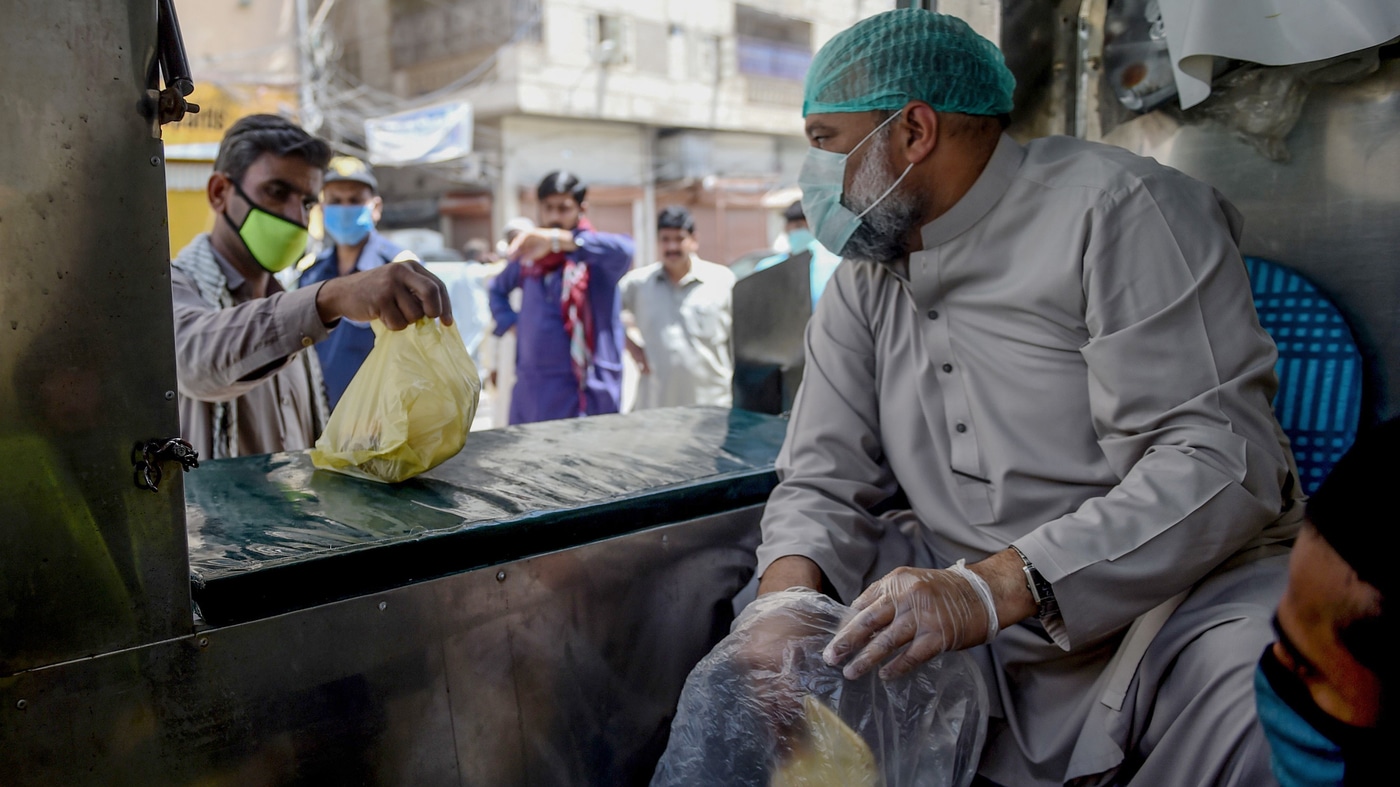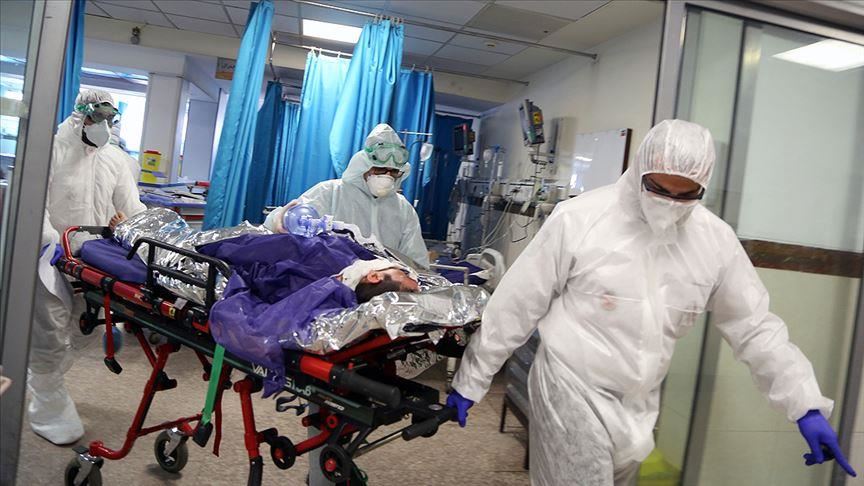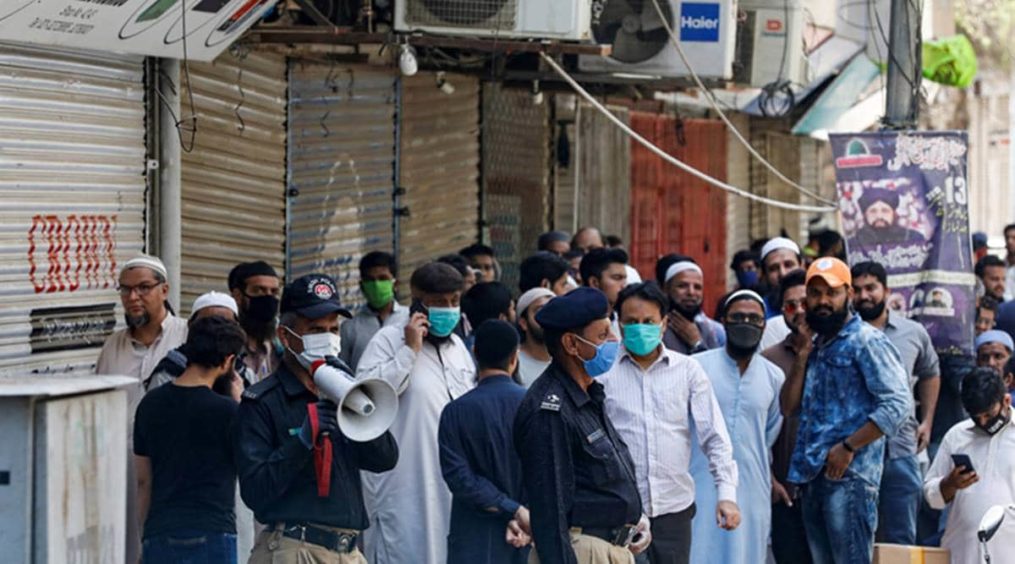Wrestling with Multiple Demons: What is the Right Way Forward for Pakistan amid COVID-19?
Posted by WALEED SHAH
In a tough bout against COVID-19, the entire world is unravelling in a manner that has never been seen before. Countries with supposedly unshakable infrastructures are all practically in the state of submission before an incomprehensible challenge that is the novel coronavirus.
Regardless of what the state-endorsed data tells us, the sky-rocketing number of patients across the globe prompts even a common folk to ask the question: “With the ongoing crisis, what exactly is the fate of Pakistan?”
In a comprehensive discussion with Mr. Tajammul of Love For Data (LFD) – one of the promising research companies in Pakistan – Mr. Aamir Attaa of ProPakistani was able to gather numerous valuable insights into Pakistan’s ongoing fight against the said pandemic.
LFD is one of the largest home-based data analysis and consultancy organizations in Pakistan that has been a part of various statewide researches and has worked closely with the international clients, government, as well as the armed forces on various research-based projects across the country.
The organization has presence in 5 countries including US, UAE, Egypt, Singapore, and Pakistan. Currently, LFD is also closely monitoring the currently unfolding situation pertaining to the pandemic, with a tailor-made model of data collection and analysis.
In light of LFD’s findings thus far, following are a few major takeaways from the telephonic discussion between Mr. Tajammul and Mr. Aamir Attaa:
A Catch-22 Situation for the Government:

Amid the current predicament, Pakistan is in a particularly tough spot as it has to tackle two major issues at once: One being the virus and the other being the economic state, which is troubled to say the least. In his interview, Mr. Tajammul of LFD stated:
“The authorities are consistently warning that the spread of the virus has not yet peaked in any region of Pakistan. The numbers are only going to rise from here, and when they do, the healthcare sector of Pakistan on the whole would most likely not be able to bear that weight.”
He continued, “However, the government heads are adamant that, as of right now, the more pressing issue at hand is our struggling economy. Therefore, despite the spread of the virus, the country must resume activity, so as to restore the chances of mere survival during these tough times.”
Assumptions Pertaining to Severity:

In the ongoing sequence of revelations, it is being observed that Pakistan seems to be faring quite well against the novel coronavirus, particularly in terms of the mortality rate. On that subject, Mr. Tajammul had this to say:
“Currently we are looking at three major hypotheses that could hold true in our particular situation. Number one being the fact that Pakistan’s overall population consists of almost 60% youth and young adults who are relatively less likely to develop severe symptoms.”
“Number two being the fact that Pakistan is one of the countries that administers Bacillus Calmette–Guérin (BCG) vaccinations on a regular basis, which could have a role in boosted immunity of the people from this region.”
“Number three being that the temperature and climatic conditions of a region may have an effect on the virus. This has been verified by a research that, after studying 100 cities around the world, postulates that the ability of the virus to attack may get affected by weather conditions.”
He continued, “The said factors have only been observed in the southeastern Asia, including countries like Bangladesh, India, and Pakistan. However, the next thing that comes to mind is that India was also one of the countries where, in the beginning, the spread of the virus was quite slow. Though as of late, the numbers in India have begun rising at an alarming rate. Which results in a thought that Pakistan might just be on the same road as India. The progress might be slow but, God forbid, the destination could very well be the same.”
ALSO READ
Pharmaceutical Companies Warn Govt to Not Ban Imports From India
Classification of the Cases:

Detection, recording, and classification of the cases is a rather complex procedure. Mr. Tajammul of LFD explains the procedure as follows, “Initially there’s two types of classes, one being the detected (those that have been recorded in the system) and the other being the overall cases. Overall cases are then sub-categorized into two classes, i.e. reported and unreported cases. Unreported cases are then further broken down into symptomatic and asymptomatic cases.”
“It bears mentioning that against every detected subject that shows symptoms, there are 10 to 12 subjects that are undetected. Although research experts at Harvard University suggest that for every single known element there are 50 unknown elements, but we stick to the ratio of 10 to 12 unknown elements. Which implies that if currently we’re standing at 25,000 recorded patients, the number of overall patients should be slightly north of 2.5 lacs.”
Mr. Tajammul further spoke, “This number is very important because, of those 2.5 lac unrecorded people, a particular percentage shall starting coming to the hospitals due to aggravated symptoms, at which point the hospitals are likely to enter panic mode once more.”
“Given this fact, a foresight that is being put forth for the end of May pertaining to the recorded patients, which is that Pakistan is likely to hit 50,000 to 70,000 mark in terms of recorded patients, with the overall figures reaching between 5 to 7 lac cases. At which point, if a mere one percent of the unrecorded 700,000 cases starts coming to the hospitals, the medical sector would start crumbling under its weight.”
Forecasting the Peak:

It is understood by this point that the number of patients is only set to rise in Pakistan and the peak of the cases/fatalities is yet to arrive. Along these lines, Mr. Tajammul stated, “Pakistan is not at the peak just yet, that’s for sure. And those who tell you that they can forecast exactly when the peak shall arrive, are not to be taken seriously because there are two ways to determine the peak.
“First being that if the number of active case and deaths remains the same for the period of 14 days, only then shall you know that you’ve reached the summit as the number of cases and deaths would most likely start going downhill from there.”
Mr. Tajammul continued, “The other way to determine the peak, he said, is by means of a graph, whereby you plot the total number of cases along the X-axis and number of new cases along the Y-axis. If there is a visible dip in the graph trajectory that would mean that you’ve reached the peak. However, it must be noted that this approach has been deemed valid in the case of two countries, i.e. China and South Korea.”
ALSO READ
Bahria Town Lab Sealed for Hiding COVID-19 Cases
Data Modelling:

There are numerous opinions with regards to the data analysis modelling techniques that ought to be applied in order to properly analyze and monitor the situation. When asked about it, Mr. Tajammul remarked, “The model currently being used by the ministry of health is called epidemiology modelling, or EPI modelling for short. The model is accessible via numerous online platforms, which is then slightly tweaked to comply with the user’s particular study.”
“LFD uses a completely new model that is built from ground zero and is made to account for every single aspect related to coronavirus outbreak, from hospitalizations to people coming from abroad who are possible carriers of the virus,” he said. “Also, it must be said that the EPI modelling has a major flaw, i.e. it assumes that the degree of spread is the same in every single region of Pakistan, which, in reality, is absolutely not the case.”
“EPI modelling is an ancient approach that was formulated almost half a century ago to study the spread of Spanish Flu. Therefore, it is highly likely to not be entirely accurate because these times and this virus are completely different than the Spanish flu,” Mr. Tajammul added.
A Different Breed?

There are also certain assumptions being made that the virus has multiple strains and each region has a different strain of the virus. When asked the very question, Mr. Tajammul said, “There is a possibility that in Pakistan, there strain of the virus is comparatively less harmful.”
“However, it must be accounted for that, amid the lax initial COVID-19 testing of international arrivals, the potential carriers of a different strain of virus may have entered the region, which has not at all been taken care of.”
He informed that his company was trying to get more details from the ministry of health on whether there’s any data available against the testing of unique cases, because the officials claim to have performed over 100,000 tests. However, he said, we don’t know if this number is of the tests done repeatedly on the same subjects under observation or on over 100,000 unique subjects.
He further said, “We must get the said fact straight before we can make any solid claims regarding the outbreak. Also, it bears mentioning that this issue is not particular to Pakistan only. Rather, it is an issue that’s ongoing in the entire world, which is why there is no solid way of telling if any specific country is ‘faring well’ against the virus.”
ALSO READ
Banks Will Prevent 850,000 Workers From Layoffs During The Coronavirus Lockdown
LFD’s Role:

As mentioned prior, LFD has been involved in more than 30 to 40 research projects pertaining to national security in partnership with the state-owned institutes, especially the Pakistan Army. As per Mr. Tajammul, this project had also been attributed to a five-year long affiliation with the Pak Army, as they were the ones who referred LFD to the National Coordination Committee.
From there, the project was taken to the National Command and Operation Center (NCOC). There, LFD primarily reports to Federal Minister for Planning, Mr. Asad Umar. For project-related coordination, CEO Shaukat Khanum Mr. Faisal Sultan and Chief of Digital Pakistan Vision, Ms. Tania Aidrus, are the primary contacts who aid LFD regarding analysis strategy and communication & projection respectively.
About the current study, Mr. Tajammul said, “Although the funds and resources might not be something to brag about, one thing we must acknowledge is that Pakistan Armed Forces have a tremendously broad vision. And it was due in part to that vision that we were encouraged to implement predictive modelling for this study.”
One of the most notable projects, other than the current one, has been the endeavor to sniff out the suspicious bank accounts in Pakistan in partnership with various banks operating in the country. Furthermore, LFD has recently concluded a project with the UAE government, whereby a predictive study was conducted to forecast the prices of various properties in Dubai during the course of the next 15 years.
Regarding the Dubai project, Mr. Tajammul stated, “Although there are a lot of AI pilots being conducted in Dubai through a year’s time, this was the first ever project that was done in partnership with the Dubai government. With the aid of this endeavor, where it used to take 3 to 4 days for a person to have their property evaluated, now it takes just 3 to 4 seconds.”
Expedience of the Current Strategies:

May 12, 2020, marked highest number of new patients recorded in 24 hours. With that in mind, a flurry of questions is starting to arise with regards to the government’s plans to ease the lockdown across the country. Also, people are starting to wonder if the government’s current strategy is working or not.
When asked about it, Mr. Tajammul stated, “First of all, implementing a smart lockdown and completely ending the lock down are two very different things. Lifting a lockdown would imply that the government has and/or shall have complete control and authority over the situation, which, unfortunately is far from the reality in the case of our country or any other country in the world.”
“Smart lockdown is a very effective and intelligent approach if and when done in the right fashion. The right way of doing it is by pinpointing the problem areas through random testing on a proactive basis. Shutting a particular place down based on the emergence of cases is a reactionary lockdown, which is what our government is doing right now,”
In conclusion Mr. Tajammul stated that, “ Although the situation on the whole is uncertain to say the least and the government is carrying on with the ‘less than perfect’ strategy as of right now, we must all realize that, for a country like Pakistan, we do not have much choice due to the a terribly suffering economy.
“To quote a foreign ambassador with whom I had a brief discussion on this subject a few days ago, total lockdown is a luxury for the privileged societies, a luxury that countries like Pakistan cannot afford. Therefore, for Pakistan, implementing the so-called ‘smart lockdown’ or lifting the lockdown altogether might be a risk, but it is a risk that the Government of Pakistan must take out of necessity, in order to ensure the survival of the nation’s wellbeing.”
The post Wrestling with Multiple Demons: What is the Right Way Forward for Pakistan amid COVID-19? appeared first on .



